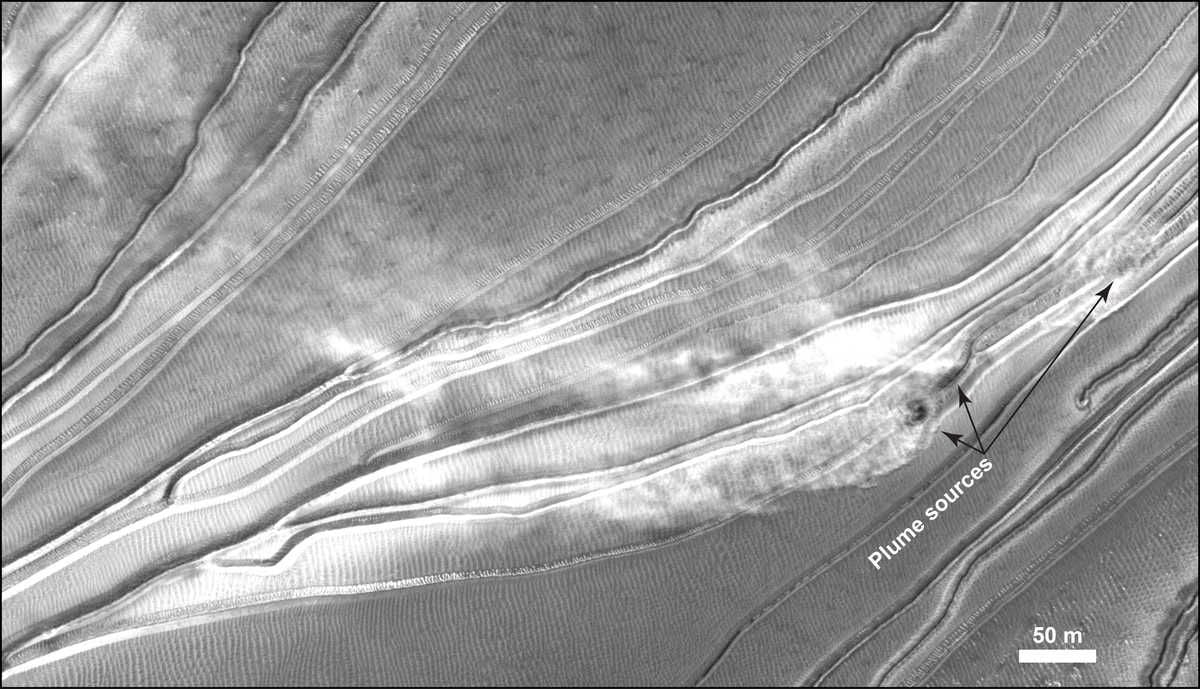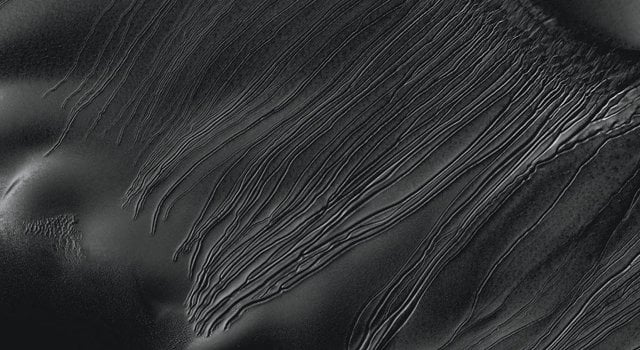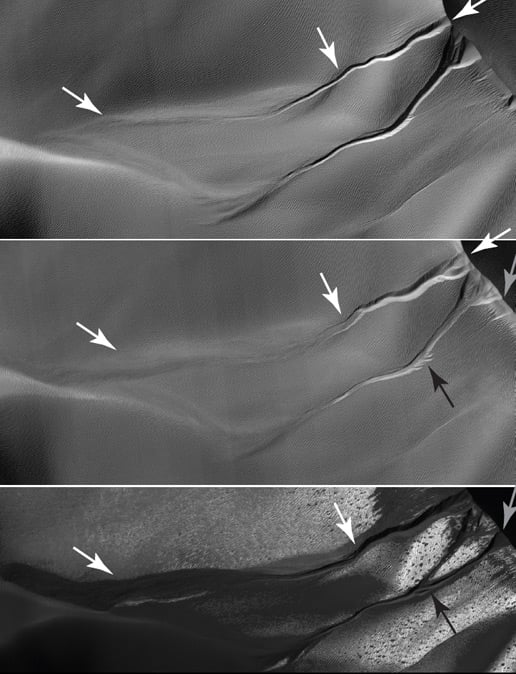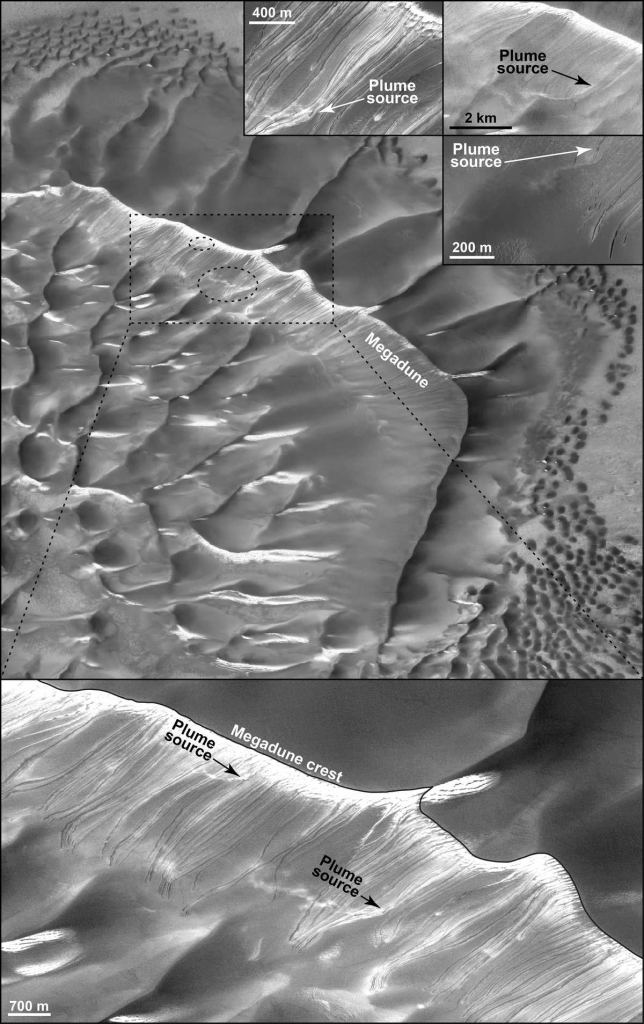Mars' gravity makes it an amazing place to find some of the biggest landscapes in the solar system. Those would include the solar system's biggest sand dune - one that resides in Russell crater. Now, a team of scientists led by Dr. Cynthia Dinwiddie noticed something unique about the sides of this massive dune. Occasionally gullies form along its surface. Dr. Dinwiddie's novel explanation for this phenomena - boulders of CO2 rolling down the dune's surface.
This isn't the first time the gullies have been observed: "For over two decades, planetary scientists have had many ideas about how and when very long, narrow gullies formed on frost-affected sand dunes on Mars" Dr. Dinwiddie says. Explanations for those gullies mostly involve some sort of CO2 ice or water ice.
There were two key features of the dune that led to a possible explanation of the gullies. The first was that changes to the gullies were actively happening to the dune since observation began, which ran contrary to the original theory that they had been in place from time immemorial. The second was that there were bright blocks of CO2 ice that were seen in some of the gullies.
The novel datapoint that Dr. Dinwiddie's extensive data search showed the gullies form seasonally. Specifically, they appear during the equivalent of the Martian southern hemisphere's early spring. Dr. Dinwiddie first noticed this by identifying brightness changes in the gullies themselves. Darker gulley sand was exposed, making a change easily noticeable even from far away remote sensing platforms like the Mars Reconnaissance Orbiter.
There are two primary explanations for this change in surface albedo, both of which have to do with the Martian seasons. In fall and winter, temperatures plunge to a point where CO2 will freeze, creating ice deposits on the side of the dune. In the spring, those ice deposits will heat up, causing instabilities in their internal structure that can results in outgassing.
Occasionally that outgassing is simply released as a puff of CO2. More rarely though, it can actually split apart the ice block, causing smaller fragments to fly into the air, and eventually come to rest landing on a different part of the dune. They might even roll a bit as they land, creating the gullies that are now a much darker red as the darker sub-surface sand is exposed without being covered in dust.
The theory neatly explains the active formation, seasonality, and presence of CO2 ice in the gullies themselves. Unfortunately, all that hard work of creating darker patches is eventually wiped out, as the annual Martian dust storms blanket the area in a more uniform dust coating.
NASA video discussing dry ice & sand dunes.Credit: NASA YouTube ChannelDespite the impermanence of the discoloration, the gullies are still there, if slightly more uniform. This novel theory about how they got there also helps to show just how active the Martian surface truly is - even if it doesn't directly involve running water.
Learn More:
SwRI - SwRI scientist captures evidence of dynamic seasonal activity on a Martian sand dune
Spaceref.com - Evidence of Dynamic Seasonal Activity on a Martian Sand Dune
Harvard - Seasonality of present-day Martian dune-gully activity
UT - New Gully Appears On Mars, But It’s Likely Not Due To Water
Lead Image
Plumes observable coming off a dune with freshly formed gullies.
Credit: NASA / JPL / University of Arizona
 Universe Today
Universe Today



